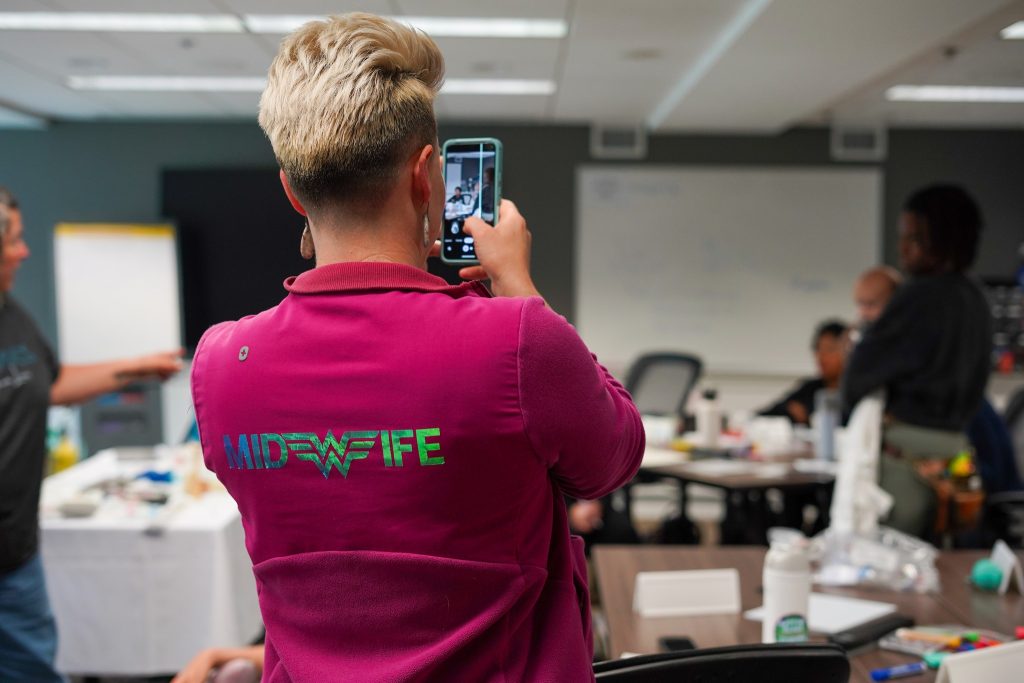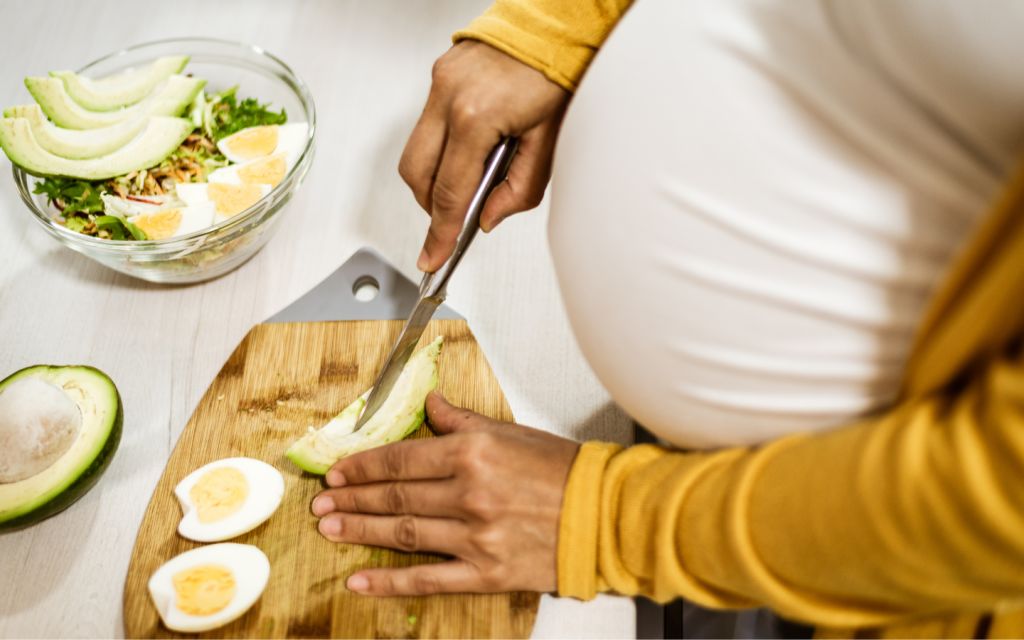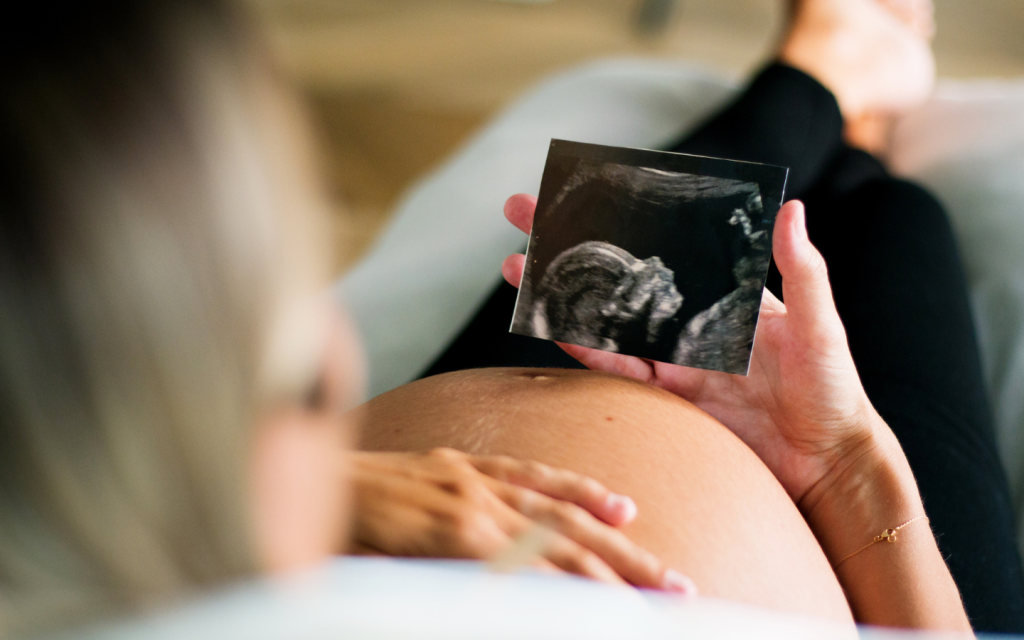Find information and inspiration
As midwives return to the spotlight through community-based care and birth center models, so do the myths. At Worcester Community Midwifery, we believe education is one of the most powerful tools in reclaiming birth, so let’s clear a few things up. In this blog, we’re addressing some of the most common midwifery myths and setting the record straight.
During pregnancy, food takes on new importance. You may be hungrier, more sensitive to certain tastes or smells, or navigating cravings and aversions all at once. Eating well isn’t about being perfect. It’s about giving your body the support it needs during a time of rapid change. In this blog, we’ll explore pregnancy nutrition with a focus on foods to eat during pregnancy and what to avoid.
“Never wake a sleeping baby” is one of the most common pieces of advice new parents hear, but is it always true? While rest is essential for infants (and parents), there are times when waking a baby is important for their development. In this blog, we’ll explore what’s typical for infant sleep and when waking your baby might be necessary for their health and feeding schedule.
Pregnancy brings big changes—physically, hormonally, and structurally. Incorporating prenatal bodywork into your routine, especially massage therapy and chiropractic care, can help relieve tension, support alignment, and prepare your body for labor. In this blog, we’ll explore how prenatal massage and chiropractic adjustments—particularly the Webster Technique—can support you throughout pregnancy.
The third trimester marks the final stretch of pregnancy, and it brings a whole new wave of physical changes, emotional preparation, and anticipation. As your due date approaches, your body begins to shift into birth mode. This stage can be filled with excitement, discomfort, and often, a mix of both. In this blog, we’ll explore what to expect during the third trimester and how to prepare physically, emotionally, and practically for the final stretch of pregnancy.
Sleep is one of the biggest concerns for new parents—and for good reason. While rest is important for both baby and parent, how your baby sleeps matters just as much as when. This blog breaks down the current standards for safe infant sleep, so you can rest a little easier knowing your baby is in a safer space.
When a new baby is on the way, siblings are part of the journey too. Including children in the birth experience can build connection and ease the transition into a growing family. At Worcester Community Midwifery, we support sibling involvement in birth when it’s safe and appropriate, helping families create meaningful, supported moments together.
The second trimester is often described as the “sweet spot” of pregnancy. Many early symptoms begin to ease, and for the first time, it may really feel like you’re pregnant. Your energy may return, your belly may begin to show, and big milestones start to unfold. At Worcester Community Midwifery, we know this stage can be both exciting and overwhelming. It’s a time of growth, preparation, and learning to trust your changing body.
Making choices during pregnancy, labor, and postpartum can feel overwhelming, but having the right tools can help. One of our favorite frameworks for informed decision-making in pregnancy is the B.R.A.I.N acronym. It’s simple, effective, and helps you pause, ask the right questions, and feel more confident in your care decisions.
Labor is often portrayed as a solo journey, focusing solely on the birthing person. However, at Worcester Community Midwifery, we recognize that partners are integral to the birthing experience. Your presence, support, and love are not just comforting; they’re transformative. In this blog, we’ll explore practical ways you can provide meaningful labor support and how they can be vital in promoting a positive and empowering birthing experience. Ensure Hydration and Nutrition Labor is physically demanding, and maintaining energy levels is crucial. Encourage your partner to stay hydrated by offering water or electrolyte drinks. Provide light, easily digestible snacks to keep … Continue reading Supporting Your Partner: Practical Tips for Labor Support
As the third trimester sets in, many people experience a shift—physically, emotionally, and energetically. Sleep may be harder, the body feels heavier, and anticipation for labor starts to grow. One powerful way to support your changing body during this time? Intentional movement. Movement in late pregnancy isn’t about fitness or pushing limits—it’s about comfort, alignment, and preparing your body for the work of labor.
The first trimester of pregnancy can feel like both a quiet beginning and an overwhelming shift. For many, it’s the part of the journey that’s hardest to talk about—because so much is happening behind the scenes, and yet everything still feels uncertain.
Postpartum recovery can be beautiful, overwhelming, messy, and magical—all within the same five minutes. While you can’t plan for everything, a little preparation can go a long way in helping you feel more supported and less scattered in those early weeks. In this blog, we’ll go over some tips and tricks that can make a real difference in your journey through postpartum recovery. Whether you’re a first-time parent or navigating this phase again with a new baby, these simple strategies can help ease the transition and create moments of calm in the chaos.
When you’re planning for birth, understanding the difference between a midwife vs doula can help you build a support team that fits your needs. These roles are often confused, but each plays a unique, essential part in the birth experience. In Worcester, where access to community-centered care is growing, knowing your options is more important than ever. Here’s a clear look at what midwives and doulas each do and why they’re both vital for positive birth outcomes in our community.
In Worcester and across Central Massachusetts, most families give birth in hospitals, because there simply aren’t many other options. In fact, there is only one freestanding birth center in all of Massachusetts, and it’s not here. For a city as diverse and growing as Worcester, that’s more than a gap—it’s a community need.
















